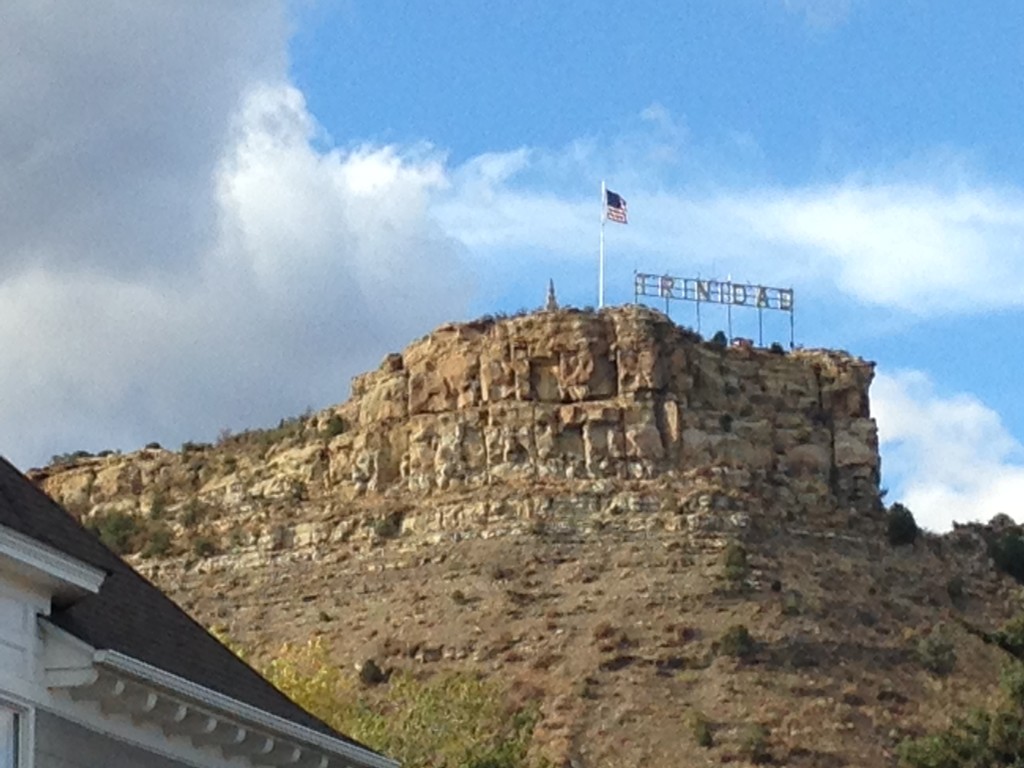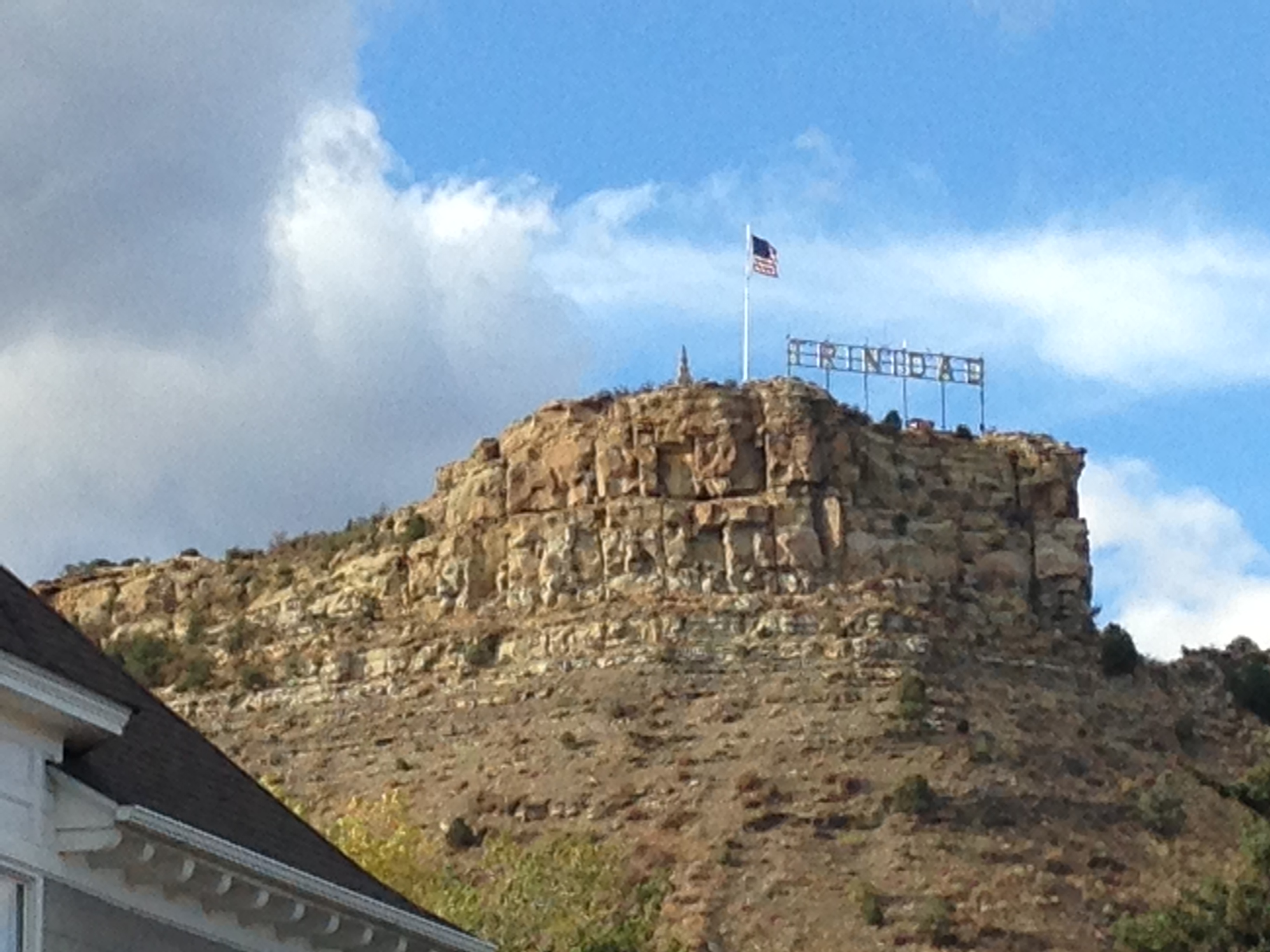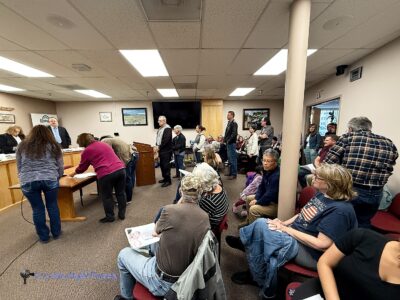by Paula M. Manini TRINIDAD — Simpson’s Rest is a scenic overlook on a sandstone bluff that juts over the rugged northwestern side of town. In days of yore, adventurous hikers picked their way up its rocky and shrubby dotted slopes to the windy summit. Pioneer photographers carried bulky gear to the top to get panoramic pictures of Trinidad, Fisher’s Peak, the Purgatoire River Valley, and the Great Plains.
TRINIDAD — Simpson’s Rest is a scenic overlook on a sandstone bluff that juts over the rugged northwestern side of town. In days of yore, adventurous hikers picked their way up its rocky and shrubby dotted slopes to the windy summit. Pioneer photographers carried bulky gear to the top to get panoramic pictures of Trinidad, Fisher’s Peak, the Purgatoire River Valley, and the Great Plains.
Today, a dirt road leads to Simpson’s Rest, where a big American flag and night-lit Trinidad sign stand next to a monument marking the grave of George Simpson.
Born in 1818 in St. Louis, Missouri, Simpson came west as a young man. The son of a physician, he tended to the injured using a medicine kit from his father. He worked as a scout, explorer and trader, and was a poet and elected official in Huerfano and Las Animas counties. He was among the founders of Fort Pueblo (now Pueblo), Hardscrabble, and Greenhorn in Colorado.
He and his wife Juanita Suaso, who he met at Fort Pueblo, finally settled in Trinidad where he was proprietor of a stationery store.
Wrapped in the mists of a story told over time, however, is why and how he took refuge on the bluff under sheltering boughs during “nights of storm and dread.” Was he escaping Indians who were attacking or were going to attack Trinidad? Did he purposely or inadvertently divert their attention and save the town? Was his daughter Isabel with him?
Whatever the rest of the story, Simpson expressed his wish to be buried atop the bluff in this stanza of a poem, “Delve deep my grave in the stern gray rock, In its rigid embrace let me rest, With naught but my name on the stone at my head, And the symbol of Faith on my breast.” When he died in 1885, family and friends honored his last wish. It is said it took two days for them to carry his wooden coffin up the rugged slopes to the summit.
For more information on George and Juanita Simpson, visit the Santa Fe Trail Museum in Trinidad and El Pueblo Museum in Pueblo. Also read ‘Trinidad, Colorado Territory,’ by Morris F. Taylor and ‘Pueblo, Hardscrabble and Greenhorn: Society on the High Plains, 1832-1856,’ by Janet Lecompte.






